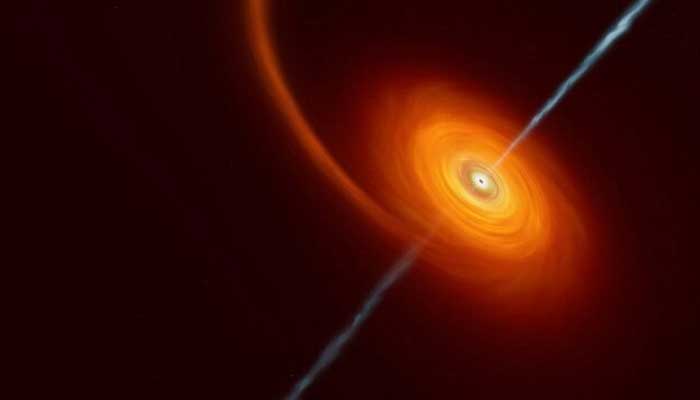
A constellation of satellites is being developed by the researchers in South Korea that could reveal what goes on in the vicinity of supermassive black holes like never before.
The constellation, which is dubbed Capella, is a brainchild of Seoul National University astronomy professor Sascha Trippe. Trippe, who is an expert in black holes, has grown frustrated with the limitations of humanity’s existing instruments for observing black holes, reported Space.com.
He is concerned that research may soon reach a “dead end” unless major technological advances are made.
It caused a sensation when the first-ever image of a supermassive black hole — the one at the centre of the Messier 87 galaxy some 55 million light-years away from Earth — was revealed to the world in 2019.
A glowing ring the shape of a donut, enclosing an eerie dark spot was shown by it. It was confirmed that black holes, these mind-boggling hotspots of gravity so potent that not even light can escape from them, actually exist.
Moreover, in 2022, an image of the black hole at the centre of our own galaxy, the Milky Way, followed.
Though the images were captivating, they were nowhere near perfect for researchers like Trippe.
As a result of the limitations of the Event Horizon Telescope (EHT), these imperfections exist.
Notably, EHT is a planet-wide network of radio telescopes that acts like a single planet-wide observatory thanks to a technique known as very long baseline interferometry.
“The problem is that at any given point in time, each pair of antennas [of EHT] only measures one point of the target image,” Trippe told Space.com.
He added: “You end up with an image that is mostly empty and requires a lot of processing. For that reason, we miss a lot of structure, because features under a certain size simply cannot be imaged.”
Additionally, one way to improve the resolution of black hole images is to measure emissions of radio signals that have higher frequencies and thus shorter wavelengths.
However, that is impossible from the surface of our planet because water vapour present in Earth’s atmosphere mostly absorbs this signal.



